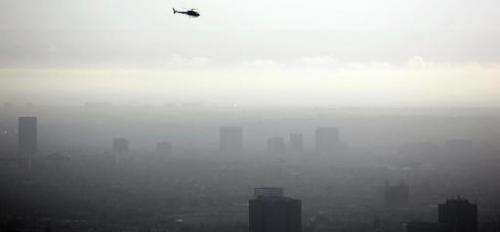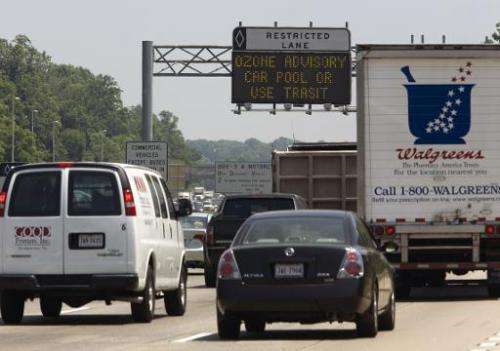US proposes stricter ozone limits

The US Environmental Protection Agency announced plans Wednesday to strengthen emission regulations for ozone, a smog-causing pollutant blamed for respiratory ailments affecting millions of Americans.
But the measures prompted immediate criticism from Republicans and industry groups, who said they would be too costly, without much benefit.
Recent scientific studies, the EPA said, show current standards leave too much harmful smog in the air.
Exposure at those levels, and at levels below the current maximum, "can pose serious threats to public health," including causing asthma and other lung diseases and can even be linked to death from respiratory and cardiovascular causes, the agency said.
"Bringing ozone pollution standards in line with the latest science will clean up our air, improve access to crucial air quality information, and protect those most at-risk," EPA Administrator Gina McCarthy said in a statement.
The EPA is proposing to limit ozone emissions from sources including power plants and car and truck exhaust to within a range of 65 to 70 parts per billion (ppm), down from 75 ppm currently—about a 10-percent drop.
It is also considering an even more stringent 60 ppm standard, depending on comments from the public during the review period.
The agency said it based the new recommendations on a review of more than 1,000 new studies published since the last update in 2008.
The stricter proposed standard could prevent the premature deaths of more than 750 and up to 4,300 people a year, the EPA said.
It could also prevent between 320,000 and 960,000 asthma attacks and 1,400 to 4,300 asthma-related emergency room visits.
The agency is legally required to review its air pollution standards every five years under the 1970 Clean Air Act, through a process that includes recommendations from an independent panel of experts.

Ozone, or smog, forms at ground level when heat from the sun "cooks" emissions of chemicals like nitrogen oxides and volatile organic compounds, which can come from cars, industrial or power plants, or certain paints or fuels.
'Most expensive ever'
Environmental groups say strengthening standards for ozone could be one of the most important public health measures taken by President Barack Obama in his second term.
But the EPA's announcement drew quick criticism from Republican leaders and industry groups.
"The Obama administration's massive new regulation—the most expensive rule ever proposed by the EPA—could slash family budgets by more than $1,500 per year, reduce GDP by trillions, and cost our economy millions of jobs," said John Boehner, the top Republican in the House of Representatives.
"Manufacturing growth could slow or stop in states that find themselves unable to meet a lower ozone standard," the American Chemistry Council warned.
The standard already in place "is the most stringent ever and has not been fully implemented across the United States," it said in a statement.
"With air quality improving, maintaining the current standard would enable further reductions in emissions while supporting US manufacturing growth."
It stressed that industry has already reduced emissions of the six worst air pollutants by two-thirds since 1980.
The EPA, however, argued that the benefits would "significantly outweigh" the costs.
"If the standards are finalized, every dollar we invest to meet them will return up to three dollars in health benefit," the EPA said, including in fewer missed days at work or school, and fewer health costs from asthma and heart attacks.
The new proposals will be open for public comment for 90 days, after which the agency will issue its final standards.
Obama's environmental battle looks to intensify further next year, as the EPA will also have to finalize measures intended to reduce greenhouse gases, including carbon dioxide, emitted by existing and planned coal power plants.
The measures, aimed at fighting climate change, could mean closures for some plants close and delays for some new projects.
But Republican leaders—which, when the new session begins in January, will control both houses of Congress—have vowed to block and overturn the initiatives.
Republicans also criticized Obama after the recent agreement with China, in which the world's two biggest polluters committed to cap and reduce carbon dioxide emissions—saying the deal was too soft on China.
And the Supreme Court agreed Tuesday to review the EPA's first-ever standards limiting emissions from power plants of mercury and other toxic air pollutants, taking up a case filed by industry groups and nearly two dozen US states.
© 2014 AFP

















